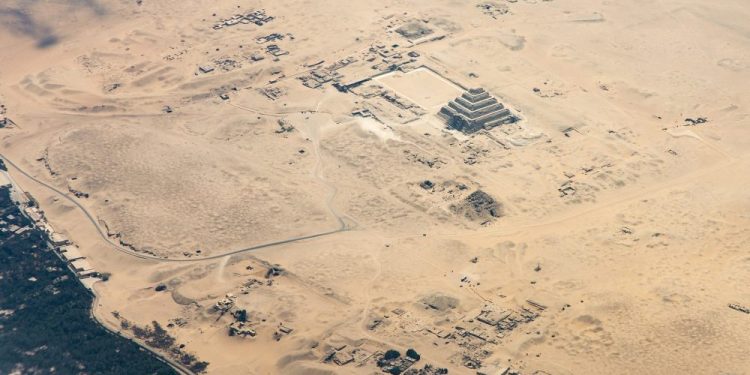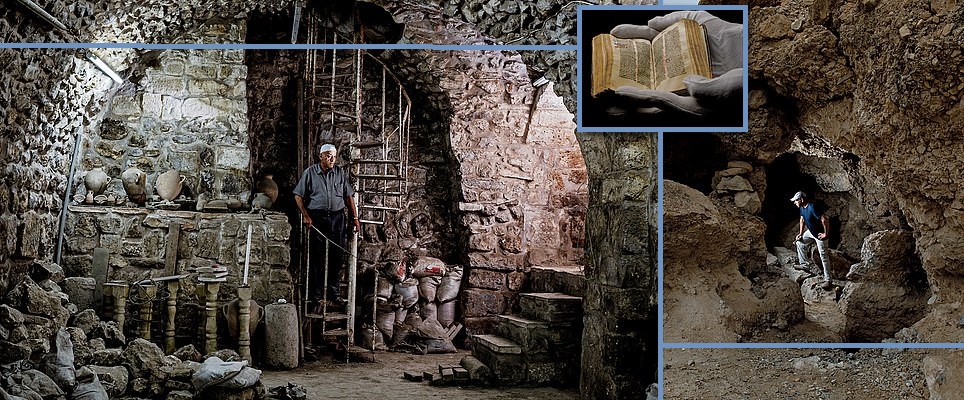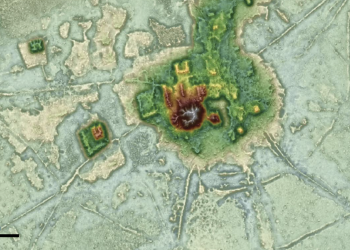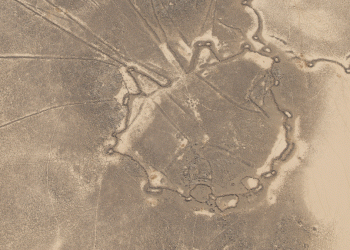The recently found Sarcophagus, remarkably intact and well-preserved, is thought to have belonged to an ancient Egyptian nobleman who served as Chief of the Treasury under Ramses the Great. An ancient Egyptian sarcophagus made of pinkish granite that has been resting for thousands of years has been discovered near Cairo in an ancient burial chamber. Described by archaeologists as a “dream find,” the ancient sarcophagus belonged to a person called Ptah-em-wia (Ptahemwia), who is thought to have served as Ramses the Great’s treasury head.
The 3,300-year-old stone coffin was found 23 feet below ground in pristine condition, adorned with emblems, hieroglyphics, and titles on all sides. The sarcophagus’ discovery at Saqqara will help illuminate who ruled Egypt after Tutankhamun, hopes professor Ola El Aguizy. In addition, the hieroglyphics found on the sarcophagus match those found on the walls of the tomb itself, confirming it is Ptah-em-wia, the Egyptologist said. “What archaeologists have come across only confirm that this person was indeed a nobleman that was very close to the king, and his relation and titles in temples from Thebes prove that. In addition, he was the person responsible for the divine offerings to all the gods.
In fact, the archaeologists say that his title today could be equated to someone serving as the Minister of Finance of a country. The sarcophagus’ discovery was revealed in the fourth series of Egypt’s Lost Treasures, which premiered on National Geographic (and is also available on Disney+). In spite of finding the surface-level tomb last season, Professor El Aguizy was not able to descend into the underground chamber until this year. A shaft was dug near the pyramid of King Unas to allow archaeologists to reach the first level of the tomb after moving several tons of sand.
The hard labor paid off since once they reached their destination, they found 3,000-year-old stone masonry, which had to be reinforced before they could descend any further safely. The team sat on a large metal bucket that was raised and lowered by hand, descending into a small hole in the floor that concealed a pit. Located on this second underground level was the sarcophagus’ burial chamber. In Saqqara, it is rare to find an intact coffin in the grave of its original owner. The Egyptian Ministry of Tourism and Antiquities said the lid was broken and had been left in the corner of the room, though it was found in good condition this time.
It is believed that grave robbers opened the coffin and looted it. Many tombs were reused several times in ancient times, so there were no remains of the original owners’ belongings. In addition, tomb robbers were active in the area back then. Ptah-em-wia, however, built the tomb in which his sarcophagus had been found. All of his titles are recorded on his coffin, including Grand Overseer of Livestock and Royal Scribe. In the era following Tutankhamun’s death, he headed the treasury of King Ramses II. Among its images are a human figure with hands crossed on his chest and the face of Ptah-em-wia with a false chin.
Al Aguizy explained that this sarcophagus is a good example of the New Kingdom style of sarcophagi for the elite. Traditionally, the sarcophagus was made of granite and inscribed with the gods’ emblems: on top of the lid of the chest is the sky goddess’s nut, with her wings open to protect the deceased, and four sons of Horus surround the tomb with prayers to protect it. As well as the fine artistic characteristics of New Kingdom art, the features of the face and beard also reveal the high rank of the deceased. To uncover Ptah-em-wia’s full life story, Professor El Aguizy’s team will now study the sarcophagus in depth.











